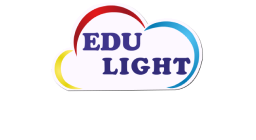In the rapidly evolving landscape of education, digital learning platforms have emerged as powerful tools for transforming teaching and learning experiences. These platforms offer a
wealth of advantages for educators, empowering them to deliver dynamic, personalized instruction that meets the diverse needs of students. As we look towards the future of education, let’s explore some of the key advantages that digital learning platforms unlock for teachers:
1. Enhanced Instructional Flexibility:
Digital learning platforms provide teachers with unprecedented flexibility in designing and delivering instructional content. With access to a diverse range of resources, including multimedia materials, interactive activities, and virtual simulations, teachers can create engaging and interactive lessons that cater to diverse learning styles and preferences. This flexibility allows teachers to adapt their instruction to meet the individual needs and interests of their students, fostering a more personalized and effective learning experience.
2. Expanded Access to Educational Resources:
One of the most significant advantages of digital learning platforms is their ability to provide educators with access to a vast array of educational resources from across the globe. Teachers can leverage these resources to supplement their curriculum, enhance their teaching materials, and incorporate real-world examples and case studies into their lessons. Whether
it’s educational videos, online textbooks, or interactive learning modules, digital platforms empower teachers to enrich their instruction and inspire their students with a wealth of multimedia content.
3. Data-Driven Insights and Analytics:
Digital learning platforms offer teachers valuable insights into student learning through sophisticated data analytics and assessment tools. By tracking student progress, engagement, and performance in real-time, teachers can identify areas of strength and weakness, tailor their instruction to address individual learning needs, and provide timely feedback to
support student growth. This data-driven approach enables teachers to make informed instructional decisions, monitor student progress more effectively, and ultimately enhance learning outcomes.
4. Collaborative Learning Communities:
Digital learning platforms facilitate collaboration and communication among teachers, enabling them to share best practices, collaborate on instructional materials, and engage in professional development opportunities. Through online forums, discussion boards, and virtual communities, teachers can connect with peers from around the world, exchange
ideas and resources, and collaborate on innovative teaching strategies. This collaborative approach fosters a culture of continuous learning and professional growth, empowering teachers to stay informed, inspired, and motivated in their practice.
5. Adaptive Learning Technologies:
Advancements in adaptive learning technologies are revolutionizing the way teachers deliver instruction and support student learning. These technologies use algorithms and machine learning to analyze student performance, adapt instructional content based on individual learning needs, and provide personalized feedback and support. By tailoring instruction to
meet the unique needs of each student, adaptive learning technologies help teachers optimize their teaching effectiveness, maximize student engagement, and promote academic success.
6. Professional Development Opportunities:
Digital learning platforms offer teachers access to a wealth of professional development opportunities to enhance their teaching skills and expertise. Whether it’s online courses, webinars, or virtual workshops, these platforms provide convenient and flexible options for teachers to expand their knowledge, learn new instructional strategies, and stay abreast of
emerging trends in education. By investing in professional development, teachers can continually improve their practice, inspire their students, and drive positive change in their schools and communities.
In conclusion, digital learning platforms hold immense potential to revolutionize education and empower teachers to deliver high-quality instruction that meets the diverse needs of
students. By harnessing the advantages of digital learning platforms, teachers can enhance instructional flexibility, access a wealth of educational resources, leverage data-driven
insights, collaborate with peers, integrate adaptive learning technologies, and engage in ongoing professional development. As we embrace the future of education, let’s seize the
opportunities afforded by digital learning platforms to unlock new possibilities for teaching and learning in the 21st century.






